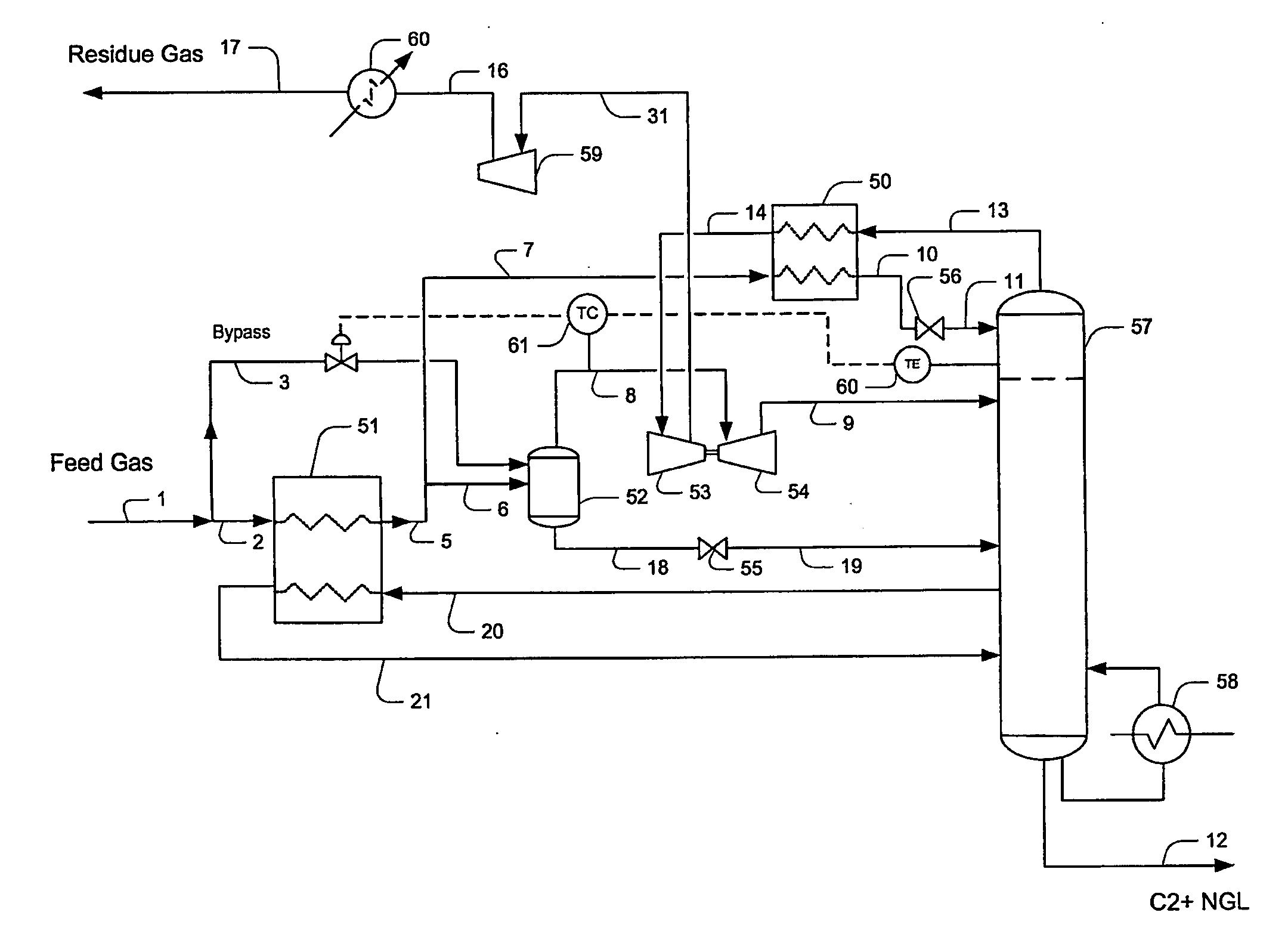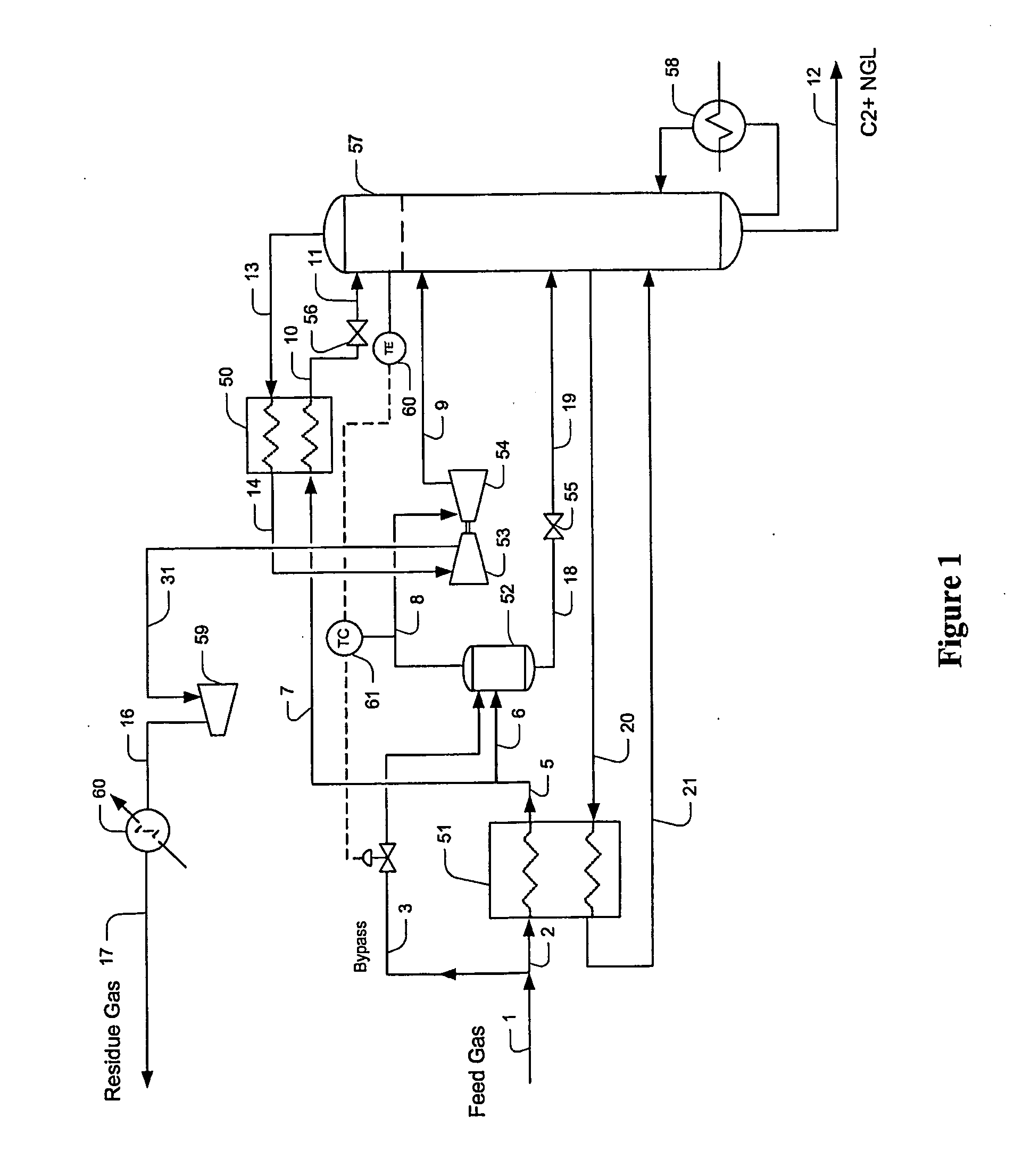NGL Recovery Methods and Configurations
a technology of ethane recovery and configuration, applied in the field of0002gas processing, can solve the problems of ethane recovery in excess of 90% that is neither achievable nor economically justified, and ethane recovery is often limited to 20% to 50%, so as to achieve desirable separation characteristics and increase power production
- Summary
- Abstract
- Description
- Claims
- Application Information
AI Technical Summary
Benefits of technology
Problems solved by technology
Method used
Image
Examples
Embodiment Construction
[0022]The inventors have discovered that high ethane and propane recovery (e.g., at least 70% to 90% C2, and at least 95% C3) can be achieved where an NGL plant includes a feed gas bypass that controls the inlet temperature to the turboexpander and / or the demethanizer to thereby strip CO2 content from the demethanizer bottom. Contemplated configurations and methods are particularly advantageous where the feed gas has a relatively high CO2 content (e.g., equal or greater than 2 mol %) as such configurations will also avoid CO2 freezing. Furthermore, such configurations and methods will advantageously reduce gas compression power requirement. Viewed from another perspective, it should be appreciated that the use of a feed gas bypass that is coupled to the demethanizer operation will allow stripping of CO2 from the NGL product to no more than 10 mol %, more typically no more than 6 mol % and most typically no more than 2 mol %, thereby reduce CO2 freezing, lower power consumption, and ...
PUM
 Login to View More
Login to View More Abstract
Description
Claims
Application Information
 Login to View More
Login to View More - R&D
- Intellectual Property
- Life Sciences
- Materials
- Tech Scout
- Unparalleled Data Quality
- Higher Quality Content
- 60% Fewer Hallucinations
Browse by: Latest US Patents, China's latest patents, Technical Efficacy Thesaurus, Application Domain, Technology Topic, Popular Technical Reports.
© 2025 PatSnap. All rights reserved.Legal|Privacy policy|Modern Slavery Act Transparency Statement|Sitemap|About US| Contact US: help@patsnap.com



